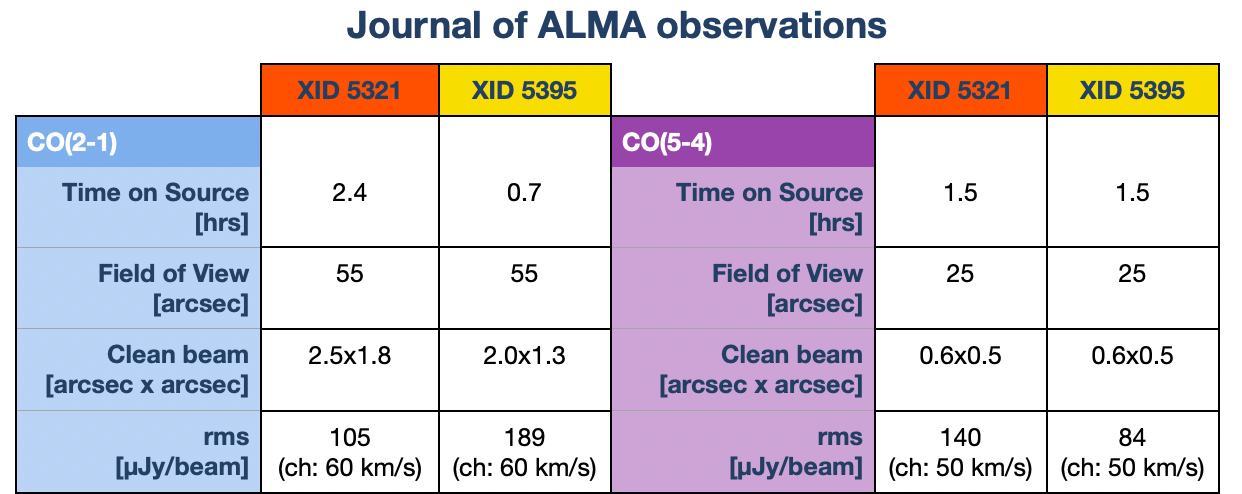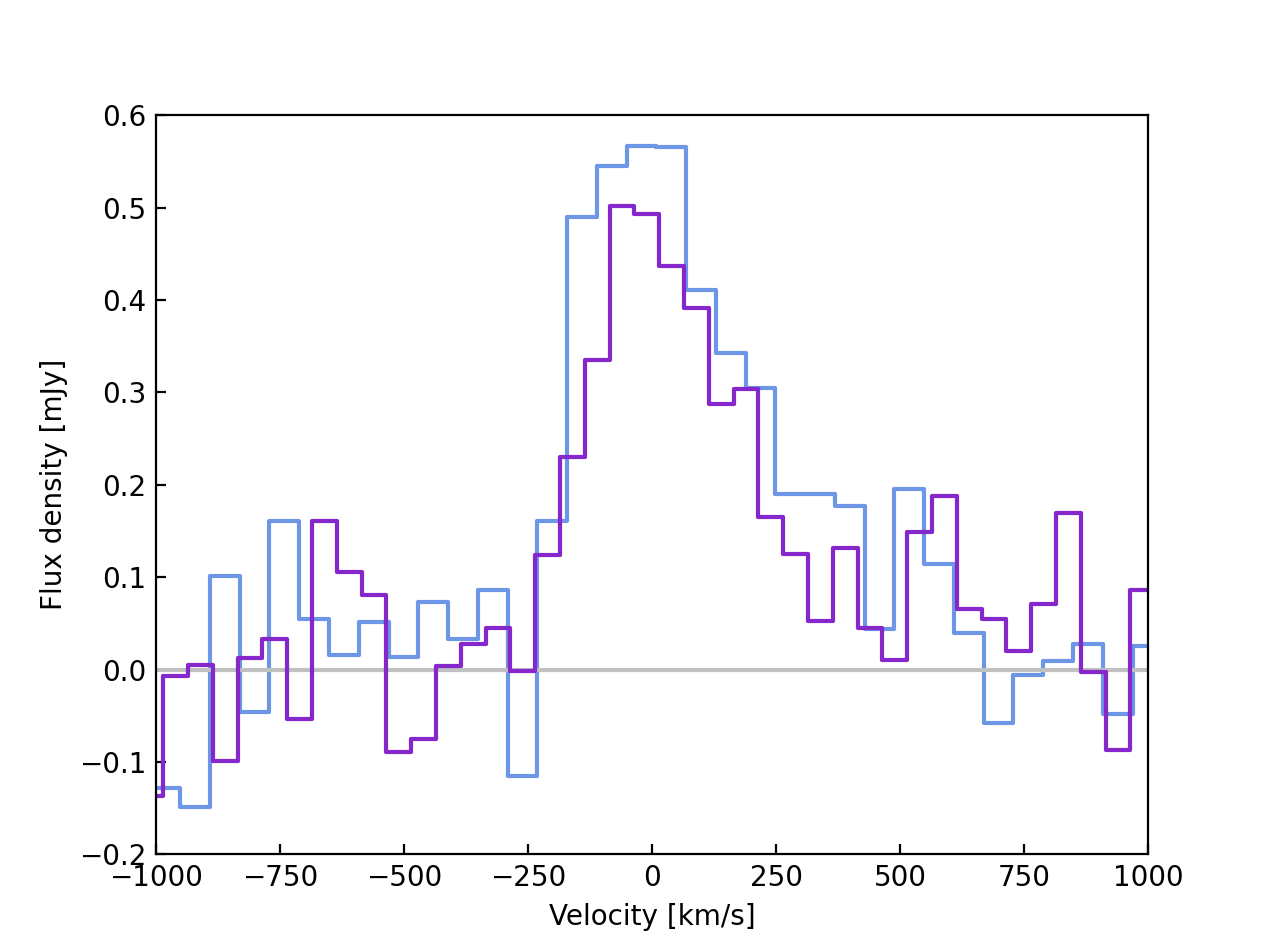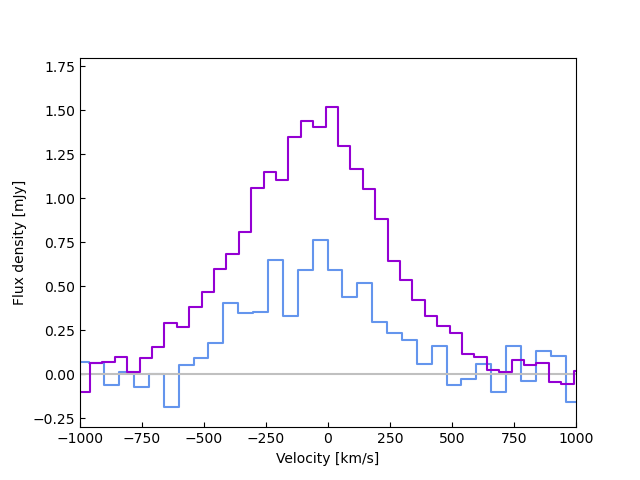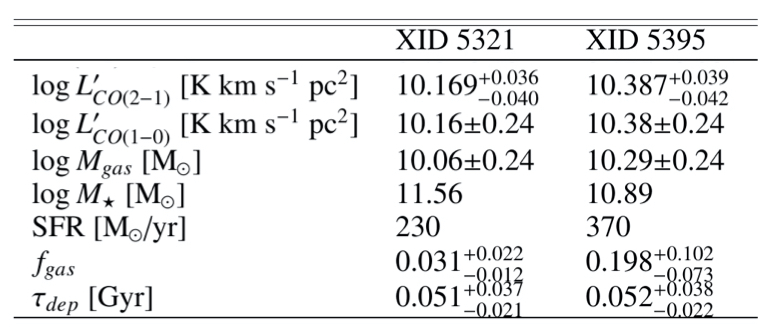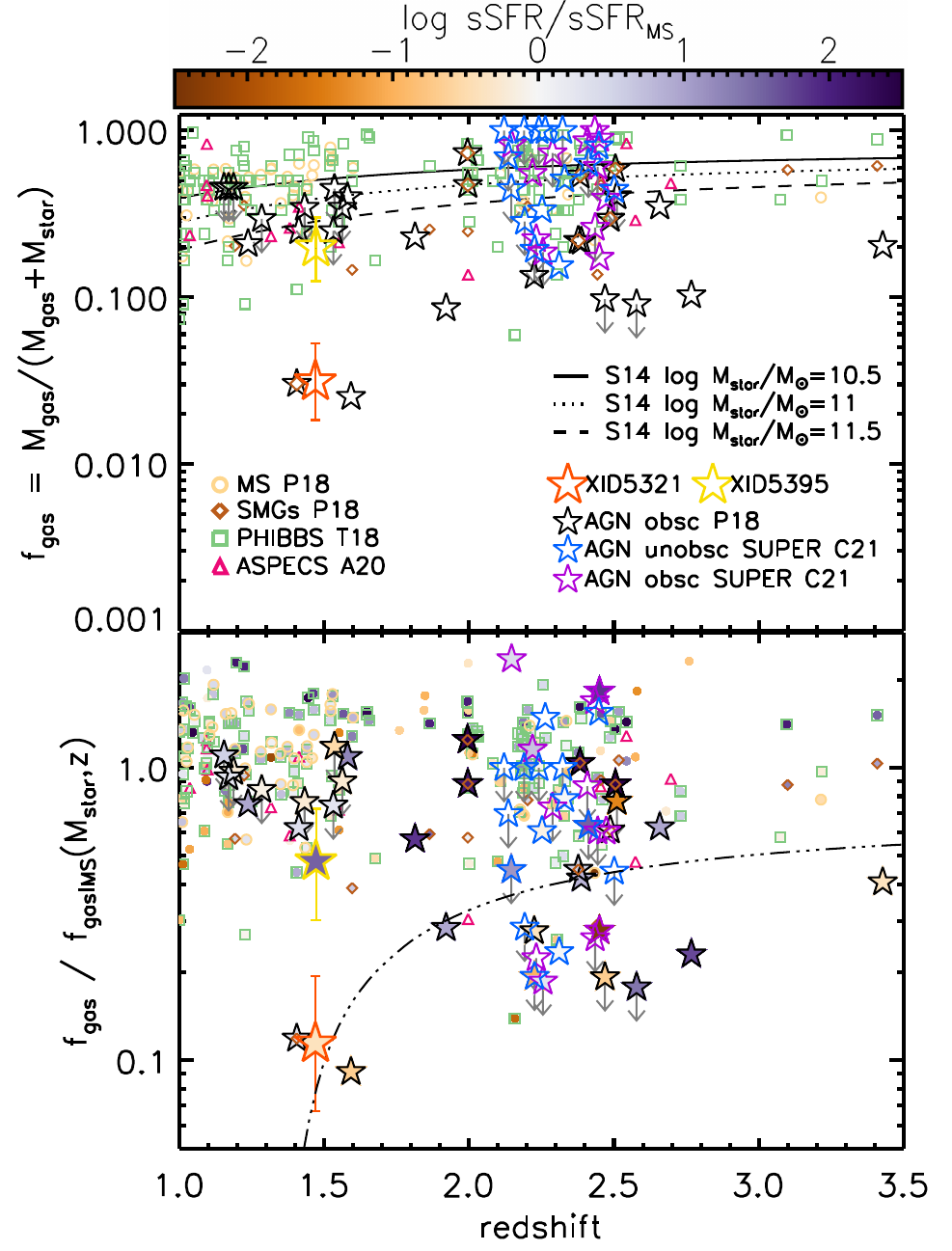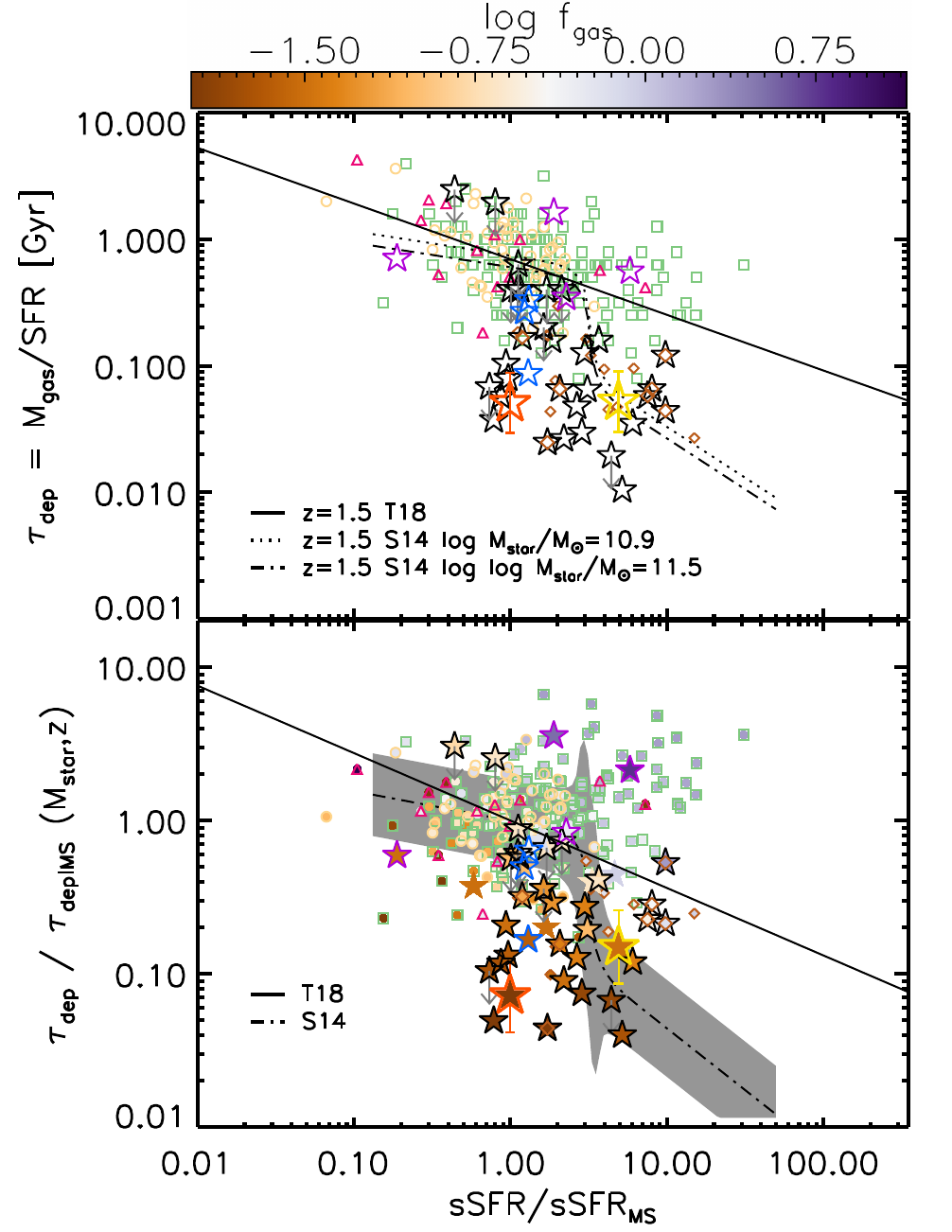The study of the gas content and conditions (traced by its distribution and excitation) in AGN with outflows, and the relation between outflow episodes seen in various gas phases (ionized, molecular) need to be investigated over an increasingly large number of sources.
The critical feedback phase is expected to be short and X-ray active (e.g. accretion on the BH is at its maximum), therefore large area X-ray surveys with high-quality multi-wavelength data provide the best tool to select these intrinsically rare sources.
-
XID 5321 and XID 5395 are two such rare sources: these luminous (Lbol ~ 1046.5 erg/s) obscured QSOs have been selected from the XMM-COSMOS survey at the peak of galaxy evolution (z~1.5) according to the criteria proposed in Brusa et al. (2015, 2016) on the basis of their observed X-ray-to-optical-to-NIR colors.
-
the two quasars have remarkably different host galaxies properties, XID 5395 being classfied as a starburst (sSFR/sSFRMS=5), while XID 5321 is a Main Sequence (MS) galaxy, similar to XID 2028.
-
X-Shooter and VLT/SINFONI IFU observations (Perna et al. 2015, Brusa et al. 2016 see Fig. 1-2) reveal the presence of massive outflows in both blue- and red-shifted components, spatially displaced from the nuclear core ( v > 1000 km s-1, Rout ~ 5 kpc), suggesting the presence of wide opening angle winds
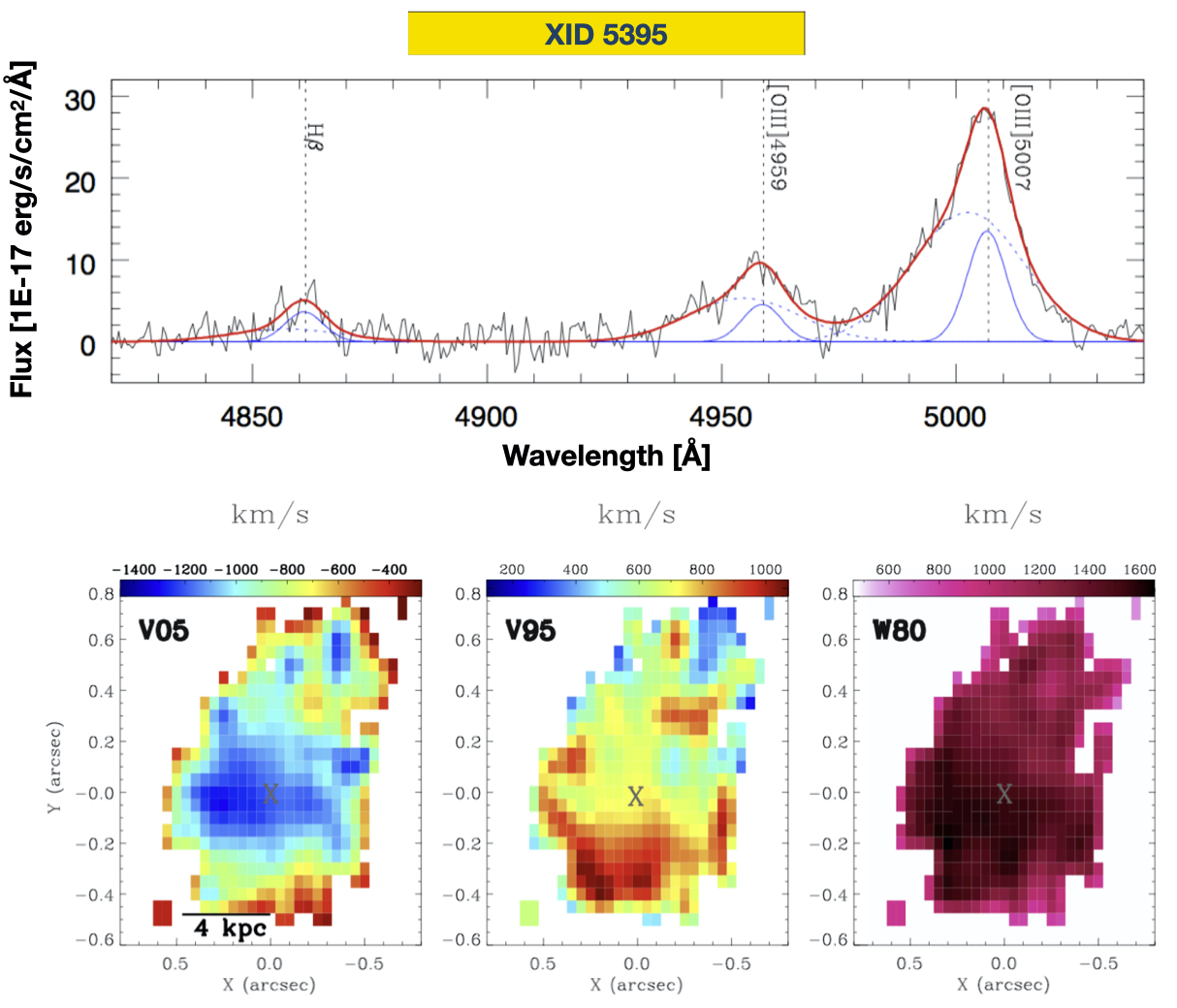
Figure 1: Outflows in the ionized [OIII] phase in XID5395. Top: SINFONI J-band spectrum extracted within an aperture of 1′′ diameter from the nucleus around the Hβ+[O III] emission lines region. Superimposed on the spectra are the best-fit components of the simultaneous, multicomponent fit (solid and dashed blue curves). The red solid curves represent the sum of all model components (adapted from Brusa et al. 2016). Bottom: [OIII]λ5007 maps across the field of view of maximum blueshifted velocity (v05), maximum redshifted velocity (v95), and line width (w80). Blue-(red) shifted velocities as high as Vmax,blue∼ −1400 km s−1(Vmax,red∼+1100 km s−1) are found at distances as high as 4 kpc from the centre (indicated with a cross). Adapted from Brusa et al. (2016).

Figure 2: Outflows in the ionized [OIII]λ5007 phase in XID5321. Left: NIR slit-resolved spectroscopy analysis of the X-Shooter spectra (2D image, bottom). The nuclear and off-nuclear regions centered on [OIII]λ5007 are labeled b and c. The red and orange lines in the extracted 1D spectra (top) indicate the best fit solutions that reproduce the line profiles for the nuclear and off-nuclear cases, respectively. A prominent redshifted outflowing component is clearly detected in both regions, extending up to ~5 kpc. Adapted from Perna et al. (2015). Right: SINFONI spectrum showing the outflowing redshifted component in [OIII]λ4959,5007. (Ricci et al. in prep.)
